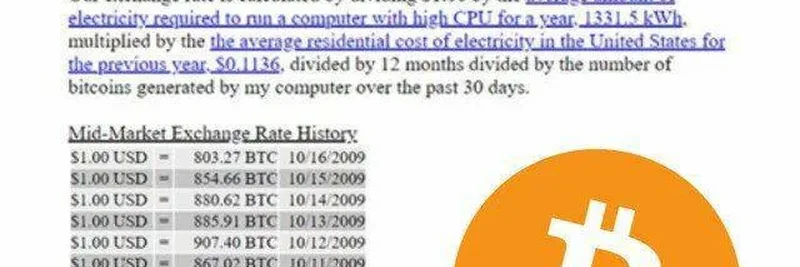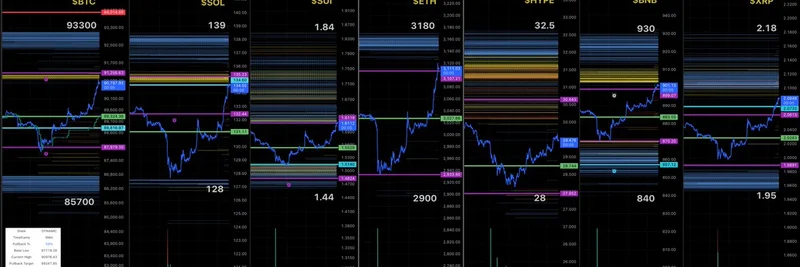Coinbase CEO Brian Armstrong recently took to X (formerly Twitter) to remind the crypto community of Bitcoin's humble beginnings. In a post that's resonating with enthusiasts old and new, he highlighted that exactly 16 years ago, on October 5, 2009, you could snag 1,309 Bitcoin for just one U.S. dollar. That's right—over a thousand BTC for the price of a candy bar today.
This wasn't some arbitrary number pulled out of thin air. It came from the New Liberty Standard, one of the first attempts to assign a dollar value to Bitcoin. The calculation? Straightforward yet groundbreaking: they based it on the electricity cost to mine Bitcoin back then. Running a high-CPU computer for a year chewed up about 1,331.5 kWh of power, multiplied by the average U.S. residential electricity rate of $0.1136 per kWh, and then divided by the number of Bitcoins generated over 30 days, adjusted over 12 months. The result pegged $1 at around 1,309 BTC.
Armstrong's nod to this milestone isn't just nostalgia—it's a shoutout to the pioneers who saw potential where others saw folly. He wrapped up his post with a timeless quote: "The people crazy enough to think they can change the world are the ones who do." It's a line that echoes Steve Jobs' famous words, but it fits crypto like a glove. Think about it: Bitcoin started as an experimental digital currency in the wake of the 2008 financial crisis, dreamed up by the mysterious Satoshi Nakamoto. Fast forward to today, and it's the bedrock of a trillion-dollar industry.
From Bitcoin's Roots to Meme Token Madness
This slice of history has particular relevance for the meme token crowd we cover here at Meme Insider. Meme coins, like Dogecoin or newer sensations on chains like Solana and Base, often start as jokes or wild ideas. But just like Bitcoin's early days—when mining on a home PC was feasible and valuations were tied to something as mundane as your electric bill—these tokens can explode if they capture the community's imagination. Remember, Dogecoin began as a meme in 2013, poking fun at crypto hype, yet it reached a market cap of over $80 billion at its peak.
The parallel is clear: what seems "crazy" today could redefine economic freedom tomorrow. Armstrong, as the head of Coinbase, one of the largest crypto exchanges, knows this better than most. His platform has onboarded millions into crypto, including those dabbling in meme tokens. This tweet serves as a reminder that innovation often looks absurd at first glance.
Why This Matters for Blockchain Practitioners
For those building in blockchain, this historical tidbit underscores the importance of fundamentals. Bitcoin's value was initially rooted in real-world costs like energy consumption, which ties into ongoing debates about proof-of-work versus proof-of-stake. As meme tokens evolve, incorporating utilities like decentralized apps or community governance, understanding these origins can inform better designs.
If you're new to crypto, mining refers to the process where computers solve complex puzzles to validate transactions and add them to the blockchain, earning new coins as a reward. Back in 2009, it was accessible to anyone with a decent rig; today, it's dominated by industrial-scale operations.
Armstrong's post has sparked conversations in the replies, with users sharing their own "what if" stories of early Bitcoin buys. It's a fun way to reflect on how far we've come—and how much further we might go. Whether you're holding BTC, trading memes, or just curious about blockchain tech, moments like this keep the spirit of innovation alive.
Stay tuned to Meme Insider for more insights into how historical crypto milestones influence today's token trends. If this got you thinking about your own crypto journey, drop a comment below!


